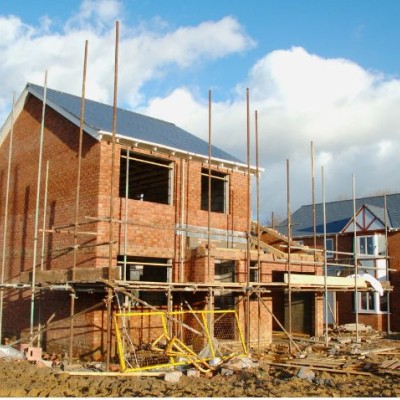Where should I be looking to invest next year?

Successful investment in property relies primarily on a strong local economy that will support high demand for homes and encourage good price and rent growth over time.
If you can buy a property in your local area at significantly less than its true market value so you have ‘instant equity’ and then make good rental profits ongoing, that’s ideal. However, it can take time and effort to find a motivated seller who’s prepared to do a ‘deal’ in return for a quick sale, and it’s certainly not something that comes up regularly, or in every area.
If you’re looking to buy a property in 2025, it’s worth investigating what factors affect the profitability of buy-to-let, both in terms of rental income and capital growth, so you can identify and properly analyse whether an area is likely to deliver on your financial objectives.
Which cities have been recently highlighted for investment?
There are lots of different reports every year suggesting the next ‘hotspot’ for property investment – particularly for buy-to-let. What’s always important to check is the source of any data that claims somewhere to be a “hotspot” and then understand why they think area A will beat area B.

What metrics are useful for identifying a hotspot?
Property prices (and rents) typically rise when demand is higher than supply, and people can afford to spend more each year due to rising wages or more cash being invested into the area. London is a classic example. It’s a capital city, short of homes versus the number of people wanting to live and work there, and with plenty of wealthy people able to keep bidding up property values and rents.
However, it’s important to know when investing, even somewhere like London can have areas that have ‘peaked’ as people can’t afford to pay more for a property or rent, or the investment might not stack up as well as it has done. There are 32 London Boroughs, some are still experiencing rent and property rises, while others have hit an affordability ceiling, so being able to identify through reports and your own research what is – and isn’t – a hotspot can be extremely useful.
An example of a well-researched report on the top UK investment locations comes from Colliers. They score cities on 24 separate indicators that fall under five categories: economic, R&D, liveability/cultural, property and environmental. Within their top city recommendations are:
- Manchester
- London
- Oxford
Focusing purely on property metrics to deliver a successful investment, they rank highly places such as Liverpool and Sheffield, taking into account factors such as house price growth, rental yield, affordability, income-to-rent ratios, and the share of renters in a specific city.
Other good research to look at is from buy-to let-lending experts Paragon Bank. They have several useful reports this year, including one about regions with ‘top rental returns’. Their analysis on rental returns suggests yields are good in postcodes such as M14 in Manchester, B29 in Birmingham and NG7 in Nottingham.
Bear in mind this is useful if you are looking to invest in property for income, but not so much if it’s capital growth you are hoping for, so if you are considering buy-to-let, their report suggests areas such as the North East and West, Wales, Yorkshire, and Humber are worth looking at to secure good overall returns.
However, postcodes and regions are large geographical areas to comment on; sometimes, you may find a great deal on a property near where you live, which would deliver great returns versus other areas, which are considered a ‘hot spot’.

How to check a recommended investment location
However, just investing in an area because of a ranking, doesn’t mean it’s the right place for you, especially if you happen to find a great deal locally to you and you should always be wary of an area suggested as a ‘hotspot’ because it’s been recommended by a company – particularly if it’s a new build scheme – the first thing to check is that their information is up to date, because it often isn’t!
Visiting experienced local estate agents that are members of a professional industry body such as Propertymark or RICS should enable you to quickly get the answers you need about current prices, demand and the market.
Here are some of the key things to check with your agent and local qualified surveyors:
-
Where is the government investing?
When the government is allocating funding for regeneration and infrastructure improvement, you can be fairly certain it will draw people to the area, and both the demand for housing and prices will rise.
Some specific areas for investment mentioned in this year’s Autumn Budget include:
- Liverpool Central Docks - delivering up to 2,000 homes and transforming the waterfront
- Renewal of Sheffield’s Supertram system
- The Oxford, Milton Keynes and Cambridge corridor
-
What are the local plans for the next 5-10 years?
You can find out from the local council exactly what projects have been approved for the next 5-10 years – things like transport and amenity improvements, business development and new housebuilding projects. Look for areas where businesses are thriving and expanding into, that also have vibrant culture and leisure scenes – these are places where people want and need to live.
-
What’s the local population profile and is it growing?
A growing population is a positive sign that there will be continuing demand for homes, but it’s important to know which market is growing most strongly. For buy-to-let for example, the strongest rental demand is likely to come from those in the 20-45 age range.
-
What is the local rental supply versus demand?
Which properties are most in demand and from which kind of tenants, and how is that likely to change in the future? For example, there might be huge student demand at the moment, but if there are plans for institutional investment in purpose-built accommodation, that demand for individual landlords’ properties could drop. On the other hand, if schools in the area are good and there isn’t much opportunity for new housebuilding nearby, the demand for family homes might be high for some time, both for rent and purchase.

-
What’s the potential for prices and rents to increase?
When price growth is predicted for an area, it’s always important to do some research and look at the context. Is it ‘real’ growth based on solid economic and property market forces, or are prices simply recovering from a dip?
For example, many areas saw price falls following the Conservatives’ disastrous ‘mini budget’ in September 2022, and while some have bounced back well, others are still recovering. The other thing to look at is whether prices have kept up with inflation over time, which is a good indicator of the general strength of the property market.
The Land Registry House Price Index is a great tool for checking historic prices, which you can search right down to a particular postcode.
Here, you can clearly see how cities have performed quite differently:
|
City |
Average price Dec 2022 |
Average price Aug 2024 |
Change |
Average annual increase since 2005 |
Exceeded inflation since 2005? |
|
Newcastle-upon-Tyne |
£187,093 |
£202,936 |
+8.5% |
2% |
No |
|
Manchester |
£243,834 |
£247,901 |
+1.7% |
5.2% |
Yes |
|
Oxford |
£450,884 |
£489,188 |
+8.5% |
3.9% |
Yes |
|
Bristol |
£355,428 |
£353,996 |
-0.4% |
4.4% |
Yes |
|
Southampton |
£253,075 |
£248,279 |
-1.9% |
2.7% |
No |
Newcastle has seen strong growth over the last couple of years, but in the 15 or so years prior to that, prices failed to keep up with inflation. Meanwhile, average prices in Bristol are still below where they were two years ago, but the city has performed well over time, so it’s worth investigating more closely what’s causing the recent slump. And then it’s clear that Manchester is a pretty solid investment location – although it would be wise to check whether it could be reaching a growth peak and you need to check out property price performance of a property on an individual street, rather than invest based on ‘average’ prices.
To get a good idea of the investment market in your area and it’s likely to change over the coming years, speak to our experts in your local branch. We'll be very happy to discuss your plans and advise you on the locations and properties that should best meet your financial goals.
Looking for advice?
If you're looking to let or sell your property, we can help. Get in touch with your local branch or book in for a property valuation.

Contact Us
Got a question, general enquiry or something else?
You may also like



